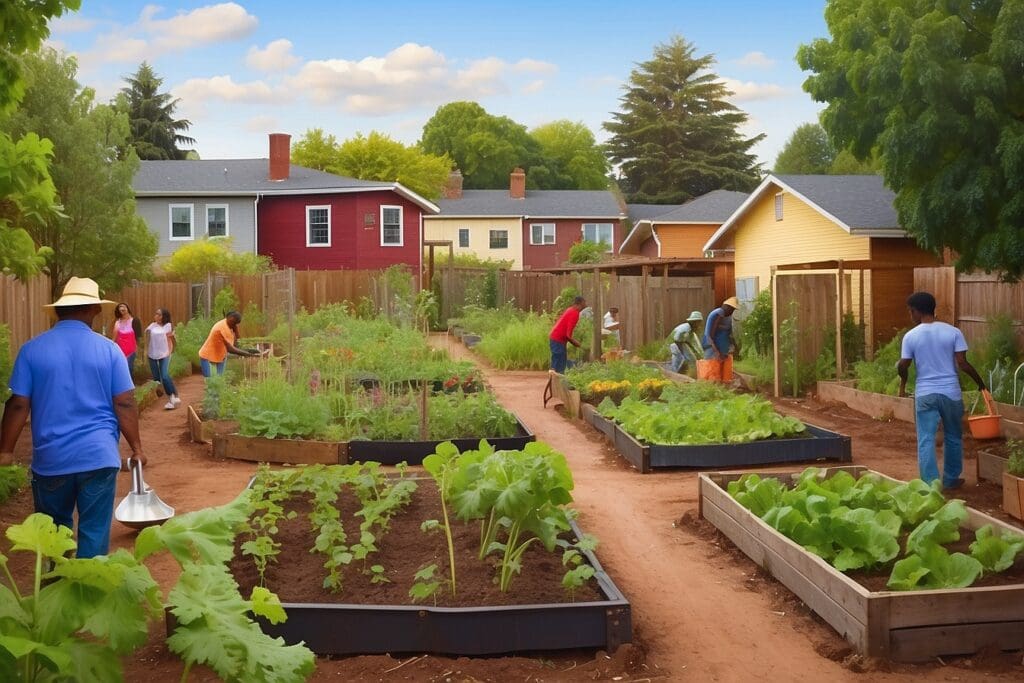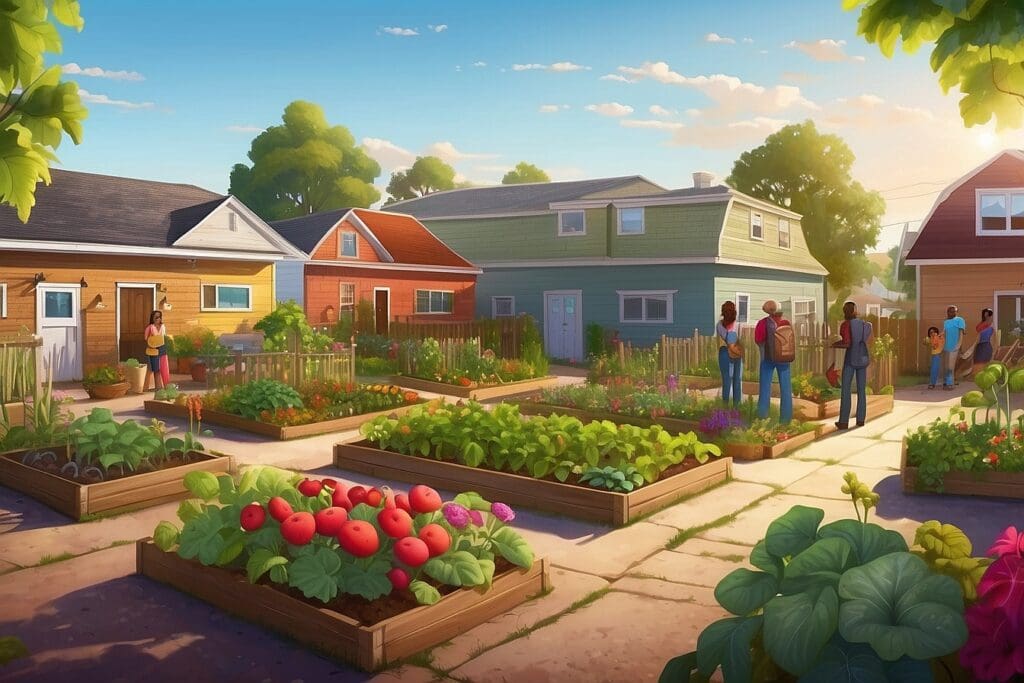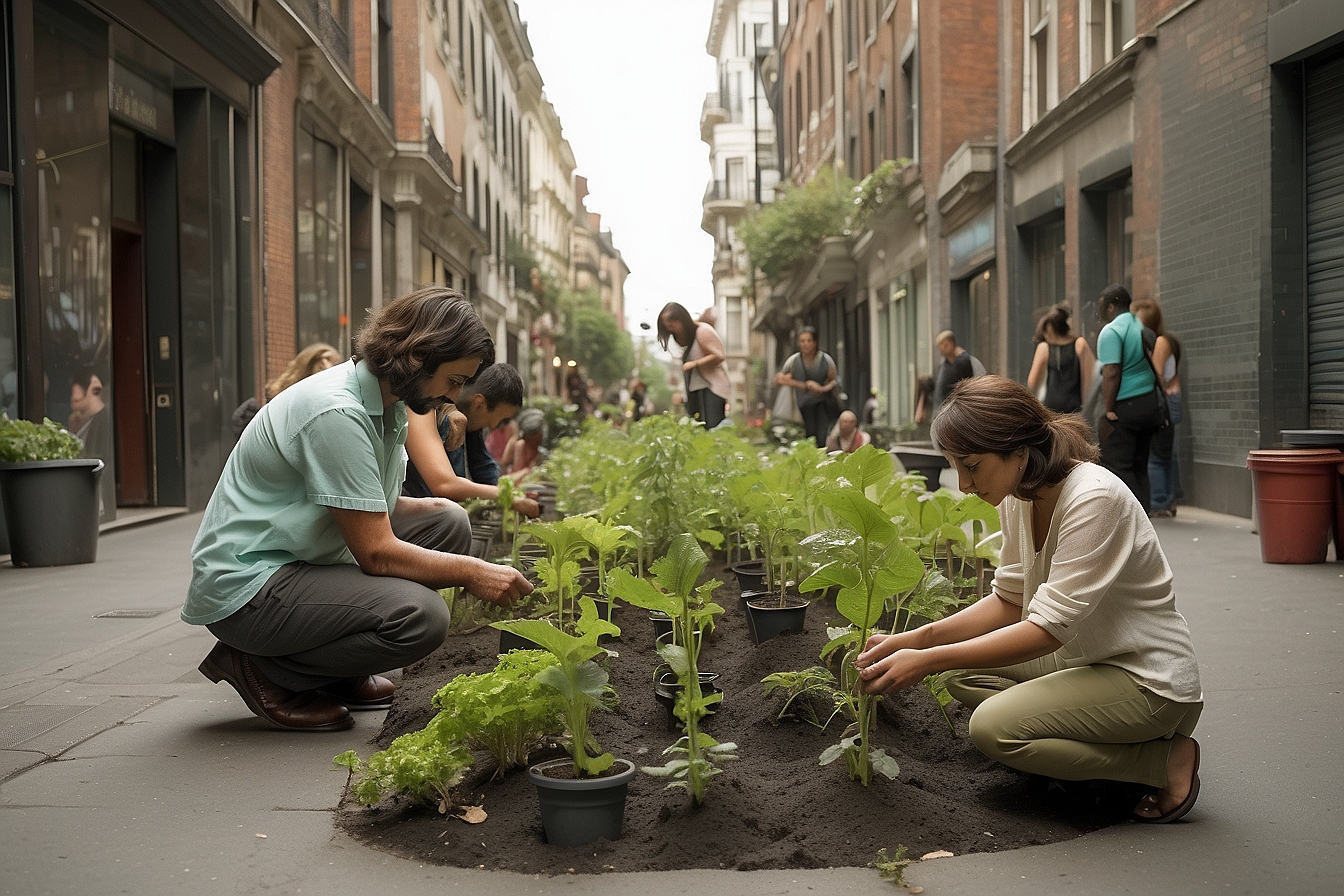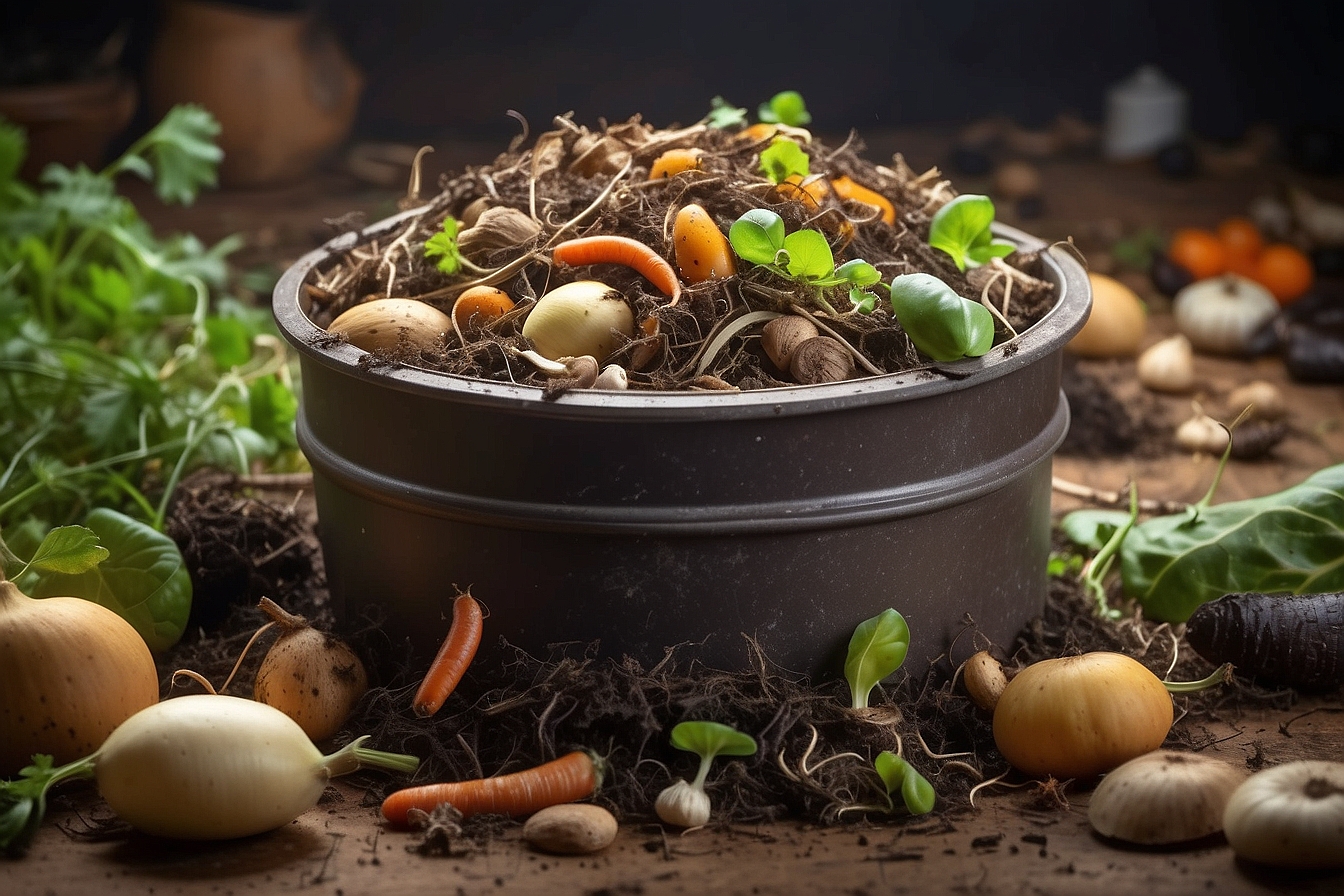Community gardens are pieces of land that are managed and gardened by a group of people. These plots of land can be found in urban, rural, or suburban areas and can be found anywhere from a school, hospital, or within a local neighborhood. Most community gardens grow fruits, vegetables, flowers, and herbs for the people involved, or they can be used as urban agriculture and sold to markets.
Aside from providing nutritional food for the community, these gardens can also provide the benefit of preserving local green space, beautifying neighborhoods, offering social interaction within the community, conserving resources, reducing food budgets, and so on. By growing your own (preferably organic) food, there is also the benefit of avoiding the use of chemicals and pesticides that can be harmful to human health and the environment. Even more, by growing your own organic food within your community, the overall carbon footprint of your harvest is much lower than purchasing food from a further farm or grocer. So where to begin? The American Community Gardening Association provides a thorough outline for getting started.1 Here’s a snapshot:

1. ORGANIZE A MEETING OF INTERESTED PEOPLE
Determine whether a garden is really needed and wanted, what kind it should be–vegetable, flower, both, organic–who it will involve and who will benefit from it. Invite neighbors, community organizations, gardening and horticultural societies, building superintendents (if it is at an apartment building)—in other words, anyone who is likely to be interested.
2. FORM A PLANNING COMMITTEE
This group can be comprised of people who feel committed to the creation of the garden and have the time to devote to it, at least in the initial stages. Choose well-organized persons as garden coordinators. Form committees to tackle specific tasks such as funding, partnerships, youth activities, construction, and communication.
3. IDENTIFY ALL YOUR RESOURCES
Do a community asset assessment. What skills and resources already exist in the community that can help with crating the garden? Contact local municipal planners about possible sites, as well as horticultural societies and other local sources of information and assistance. Look within your community for people with experience in landscaping and gardening.
4. APPROACH A SPONSOR
Some gardens “self-support” through membership dues, but for many, a sponsor is essential for donation of tools, seeds, and/or money. Churches, schools, private businesses, or parks and recreation departments are all potential supporters. One garden raised money by selling “square inches” at $5 each to hundreds of sponsors.
5. CHOOSE A SITE
Consider the amount of daily sunshine (vegetables need at least six hours a day), availability of water, and soil testing for possible pollutants. Find out who owns the land. Can the gardeners get a lease agreement for at least three years? Will public liability insurance be necessary? Will you need to obtain any permits?
6. PREPARE AND DEVELOP THE SITE
In most cases, the land will need considerable preparation for planting. Organize volunteer work crews to clean it, gather materials and decide on the design and plot arrangement.
7. ORGANIZE THE GARDEN
Members must decide how many plots are available and how they will be assigned. Allow space for storing tools, making compost, and don’t forget the pathways between plots! Plant flowers or shrubs around the garden’s edges to promote good will with non-gardening neighbors, passersby, and municipal authorities.
8. PLAN FOR CHILDREN
Consider creating a special garden just for kids–including them is essential for the future of the garden! Children are not as interested in the size of the harvest but rather in the process of gardening. A separate area set aside for them allows them to explore the garden at their own speed.
9. DETERMINE RULES AND PUT THEM IN WRITING
The gardeners themselves devise the best ground rules. We are more willing to comply with rules that we have had a hand in creating. Ground rules help gardeners understand what is expected of them. Think of it as a code of behavior. Some examples of issues that are best dealt with by adopted rules are: 1) Dues, how will the money be used? 2) How are plots assigned? 3) Will gardeners share tools, meet regularly, handle basic maintenance?
10. HELP MEMBERS KEEP IN TOUCH WITH ONE OTHER
Good communication ensures a strong community garden with active participation by all. Some ways to do this are: form a telephone tree, create an email list, install a rainproof bulletin board in the garden, have regular celebrations, or you can go more high-tech with your own website! Community gardens are all about creating and strengthening communities.
Once you have obtained a site and a plan for your garden, the resource RebelTomato offers many tools for planting and harvesting: http://communitygarden.org/rebeltomato/
To connect with other community gardens, learn more about getting started, or to purchase tools and other information, check out the American Community Gardening Association’s website: http://communitygarden.org.
Good luck and happy harvest!





